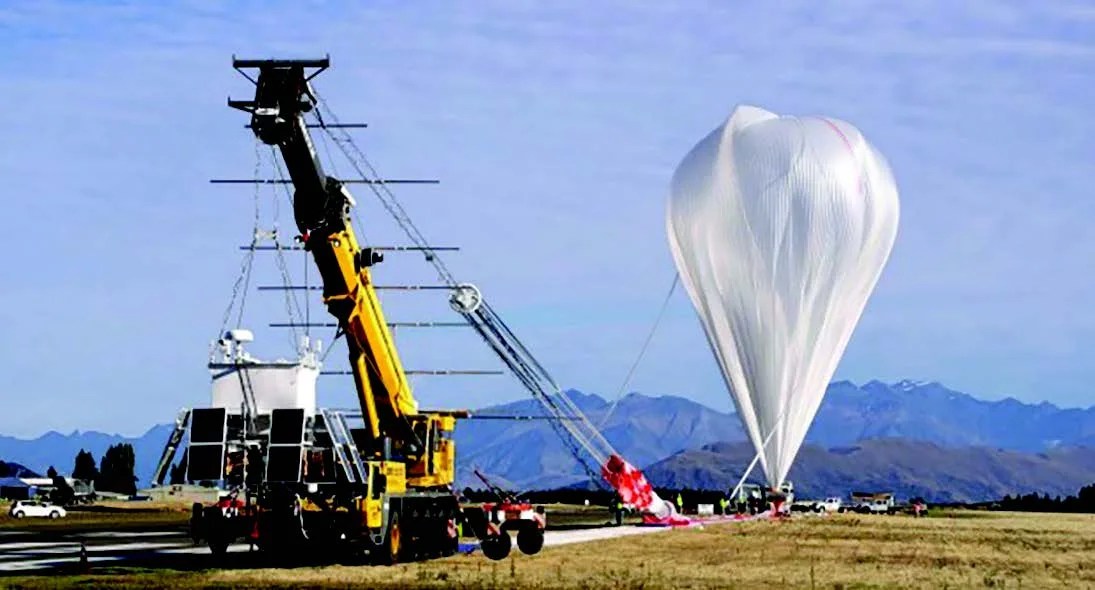Technology Infused: After over 20 years of tests and development, NASA’s Balloon Program team is on the cusp of expanding the envelope in high-altitude, heavylift ballooning with its super pressure balloon (SPB) technology. SMD technology investments that enabled development of SPB, the first totally new balloon design in more than 60 years, include improved film and evolution in the balloon design and fabrication. The pumpkin-shaped, football stadium-size balloon is made from 22-acres of polyethylene film—a material that is similar to a sandwich bag, but is stronger and more durable. The SPB is capable of ascending to a nearly constant float altitude of about 35 km for flights lasting up to 100 days, given the right stratospheric conditions. Flying at mid-latitudes, the balloon must be able to endure the pressure changes that result from the heating and cooling of the day-night cycle. NASA expects the SPB to be capable of circumnavigating the globe once every one to three weeks, depending on wind speeds in the stratosphere.
On March 26, 2015, NASA launched the second SPB flight from Wanaka, New Zealand. The balloon flew 32 days, five hours, and 51 minutes, on a voyage nearly around the world in what was the most rigorous test of the SPB technology to date. The 2015 mission accomplished what no other heavy-lift balloon had done by maintaining a nearly constant float altitude in stratospheric conditions. NASA terminated the balloon’s flight over a remote area of the Australian Outback after suspecting a leak in the balloon. Back on the ground, the team recovered the balloon and shipped it back to the United States for analysis. The ensuing investigation concluded that the most likely cause of the suspected leak was a gradual slipping of the balloon material at the metal fittings on the base and top of the balloon structure.
Impact: NASA’s scientific balloons offer low-cost, near-space access for scientific payloads in the ~450 kg weight class. Balloon campaigns are used to conduct scientific investigations in fields such as astrophysics, heliophysics, and atmospheric research. The long-duration flights enabled by SPB technology will allow extended observations of scientific phenomena, permit more sources to be surveyed, and provide more time to observe weak or subtle sources. In addition, such mid-latitude flights are essential for making observations at night, a requirement for certain types of scientific investigations. These aspects greatly enhance the return on science, and combined with the relatively low cost of balloon missions, could permit the SPB to become a competitive platform for a number of scientific investigations that would otherwise need to launch into orbit.
Status and Future Plans: To address the issues uncovered in the March 2015 flight, the SPB team implemented modifications to change the way the balloon is clamped at the metal fittings, including incorporation of a gasket. In addition, the team increased the clamping force at the fittings. The SPB is scheduled to make its next flight in Spring 2016, again from the Wanaka Airport. Scientists are confident that the changes made in response to the previous 2015 flight will enable another successful flight. Sponsoring Organization: SMD’s Scientific Balloon Program sponsored the technologies enabling SPB development. NASA’s Wallops Flight Facility in Virginia manages the Agency’s scientific balloon flight program.
































